Description
The book traces the founding, rise and fall of the great empire. It looks at the contribution of the four great ruling dynasties- Sangama, Saluva, Tuluva and Aravidu. And finally it also looks at what happened after the disastrous battle of Tallikota.
Publisher : Samvit Kendra

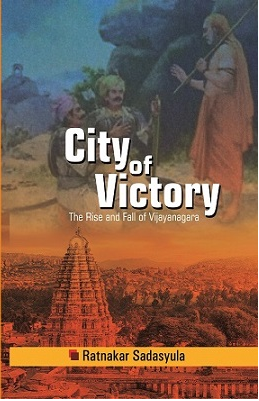


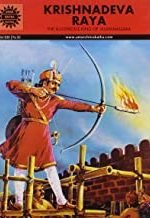
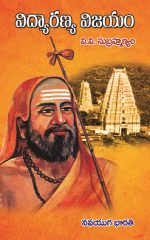

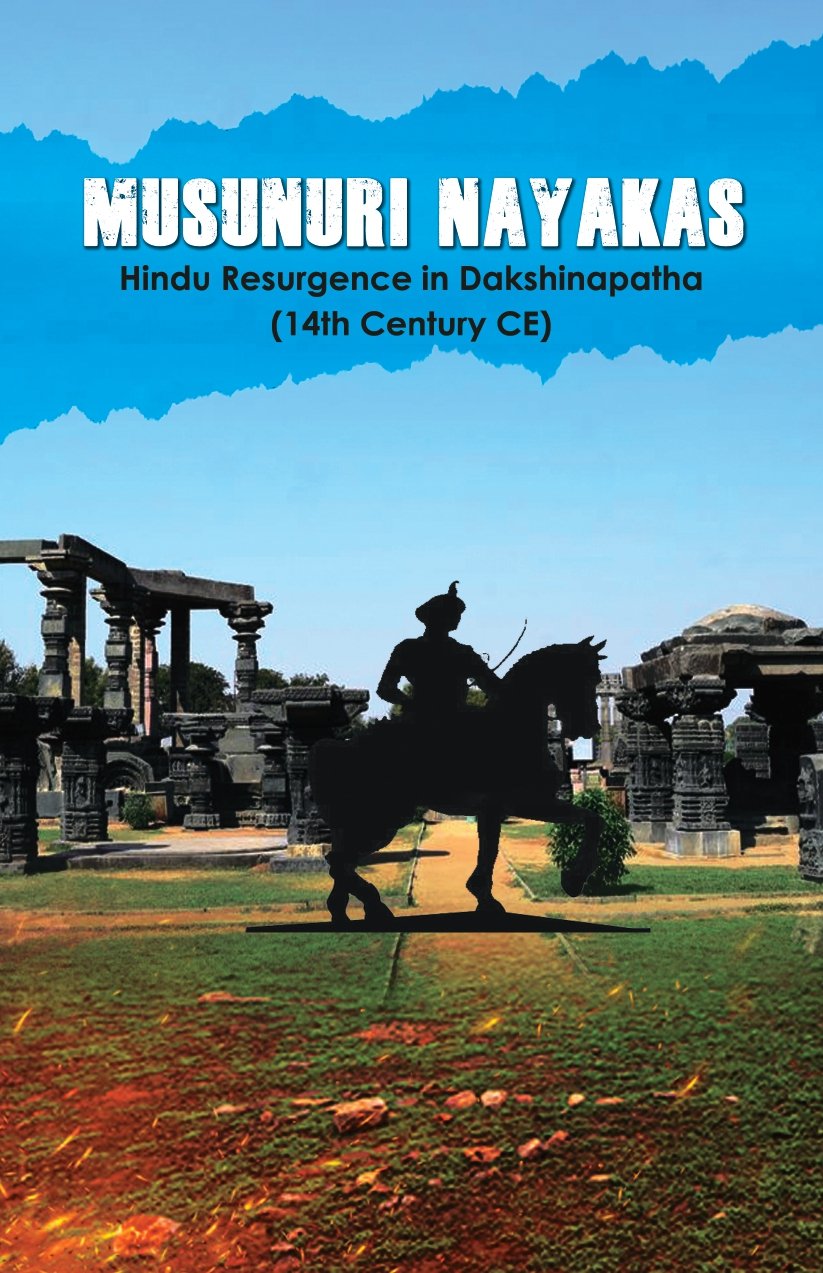
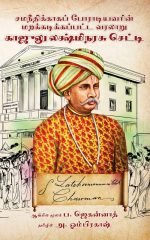
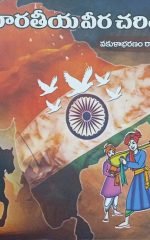

ranjan chakravarty lolla – :
నిజం చెప్పాలంటే ఈ పుస్తకం చదవక ముందు వరకు విజయనగర సామ్రాజ్యం గొప్పది అని తెలుసు కానీ ఎంత గొప్పదో ఈ పుస్తకం చదివిన తర్వాతే తెలిసింది. విజయనగర సామ్రాజ్యం అంటే “శ్రీకృష్ణ దేవరాయలు” మాత్రమే అనుకున్న నాకు “కంపరాయ” “వెంకటపతి దేవరాయ” లాంటి వారి గురించి కూడా తెలుసుకొనే అవకాశం దొరికింది.
ఈ పుస్తకం లో నాకు నచ్చిన అంశాలను ఒక్కొక్కటి మీతో పంచుకుంటున్నాను
మొదటిది ఈ పుస్తకం చాలా సరళమైన భాషలో అందరూ అర్ధం చేసుకొనేలా రాయడం జరిగింది. ఇదేదో ఒక కట్టుకథలా కాకుండా జరిగిన ప్రతిసంఘటనను తీసుకున్న ఆధారాలతో సహా వివరించారు
ఏదైనా చరిత్ర మాట్లాడేటప్పుడు అది ఎలా మొదలైంది అని చెప్తారు కానీ ఈ పుస్తకంలో విజయనగర సామ్రాజ్యం మొదలవక ముందు తురుస్కుల మొదటి దండయాత్ర నుంచి విజయనగర సామ్రాజ్య స్థాపన వరకూ మన దేశంలో ఉన్న పరిస్థితులు సంక్షిప్తంగా చాలా బాగా వివరించారు.
ఈ పుస్తకంలో ఉత్తర భారతదేశం మొత్తం మొఘల్ పాలకుల కౄరత్వంతో తడిసి ముద్దవుతున్న సమయంలో దక్షిణ భారతదేశంలో సనాతన ధర్మాన్ని కాపాడిన ఒక గొప్ప హిందూ సామ్రాజ్యం “విజయనగర సామ్రాజ్యం”.
విజయనగర సామ్రాజ్య స్థాపకులు హరిహరరాయలు, బుక్కరాయలు. వాళ్ళ మతమార్పిడి పై ఉన్న అపోహలు, శ్రీ విద్యారణ్య స్వామి ఆశీస్సులతో సామ్రాజ్య స్థాపన. విజయనగరం కు ఆపేరు ఎందుకు వచ్చింది అన్న అంశాలు వివరించారు.
నచ్చిన ఇంకో అంశం శృంగేరి పీఠం దాని చరిత్ర కూడా పొందుపరచి, అసలు విజయనగర సామ్రాజ్య స్థాపనలో ఒక పీఠాధిపతి దూరదృష్టి దీనిలో తెలుసుకోవచ్చు. అదేవిధంగా ఇప్పటికి శృంగేరి పీఠాధిపతులకు “కర్ణాటక రాజ్య స్థాపన ఆచార్య ” అని ఎందుకు పిలుస్తారో కూడా ఈ పుస్తకం చదివి మీరు తెలుసుకోవచ్చు.
సంగమ, సాళువ, తుళువ లాంటి విజయనగం పరిపాలించిన వంశాలు గురించి వివరించారు. అన్నింటి కన్నా నాకు ఈ పుస్తకంలో కనిపించిన మంచి అంశం ఈ రాజుల గొప్పతనమే కాక వాళ్ళ లోపాలను కూడా నిర్ద్వందంగా ఎత్తిచూపి ప్రతి అపజయం వెనుక ఉన్న లోటుపాట్లు కూడా చూపించారు.
మెరుపు, ఉరుముల్లాంటి ఇద్దరు “కంపరాయులు” అతని భార్య “గంగాదేవి”.
ఆ మహాతల్లి “మధురా విజయం” రచన. కంపరాయుని విజయాలు తప్పక చదవాల్సిన అంశాలు.
సాళువ నరసింహరాయ అతను పశ్చిమ తీరంలో మంగళూరు, భత్కల్ లాంటి వాణిజ్య నగరాలను గెలిచిన విధానం,
“రామాభ్యుదయం” లాంటి సంసృత కావ్యాల రచన వాళ్ళ కాలంలో కళలు, భాషా సాంస్కృతులకు చేసిన సేవలు వివరించారు. కన్నడ కవి కవిలింగ లాంటి వారిని ఆదరించడం. విజయనగర రాజుల కాలంలో అన్ని మతాలను, వివిధ సంప్రదాయాలను ఎలా గౌరవించారో చాల చక్కగా వివరించారు. వాస్కొడా గామ దురాగతాలను కూడా ఈ పుస్తకం ద్వారా ఎండగట్టారు.
ఇక విజయనగర సామ్రాజ్యానికి కీర్తికి మూలస్తంభం లాంటి శ్రీకృష్ణదేవరాయలు, అతని ఆదర్శపాలన మీరు చదవాల్సిందే.
నాలాంటి తెలుగు అభిమానులకు పంచభక్ష భోజనం లాంటి ఒక అధ్యాయం “తెలుగు సాహిత్యనికి స్వర్ణయుగం” లో శ్రీకృష్ణదేవరాయుల కాలంలో తెలుగుభాషాభివృద్ధి అష్టదిగ్గజాలు పోతన,కుమారవ్యాసుడు లాంటి కవుల గురించి. సంస్కృతము ఎలా వికసించిందో లాంటి చాల వివరాలు ఉన్నాయి .
విజయనగర సామ్రాజ్య శిల్పకళా వైభవము, విజయనగర సామ్రాజ్య రాజకీయ, వాణిజ్య, పాలనా వ్యవస్థలు వాళ్ళు పనిచేసిన విధానం మన పూర్వీకుల గొప్పతనం కూడా వివరించారు.
విజయనగర సామ్రాజ్యం ప్రత్యర్థులు ఎవరు?
వాళ్లతో ఎలాంటి యుద్దాలు జరిగాయి..
వ్యూహ-ప్రతివ్యూహాలు…
బలాబలాలు మొదలైన అంశాలు ఈ పుస్తకం చదివి తెలుసుకోవాల్సినవే…
చివరిగా తళ్లికోట యుద్ధం,విజయనగర సామ్రాజ్య పతనానికి దారితీసిన అంశాలు.
తళ్లికోట యుద్ధం తర్వాత హిందూ ధర్మాన్ని నిలబెట్టి, తెలుగు లాంటి బాషల వైభవం కాపాడి. “దేశభాషలందు తెలుగు లెస్స” అని చాటిచెప్పిన ప్రపంచంలోనే ఒక గొప్ప గొప్ప కట్టడాలతో, సాంసృతిక, ఆర్థిక పరంగా ఒక మహాధనిక సామ్రాజ్యం అంతరించిపోయిందో చెప్పారు.
చదవడం పూర్తైన తర్వాత నిజంగా చెప్పాలంటే నాకు మహానటి సినిమాలో చూపించిన సావిత్రిగారిలా ఒక వైపు ఇంతటి మహా సామ్రాజ్యం ఇలా అంతమైందా అని కన్నీళ్లు… ఇంకోవైపు ఇంతటి మహాసామ్రాజ్యానికి మనం వారసులం అనే గర్వం తో నా ఈ విహంగ వీక్షణం ముగిస్తున్నాను.
Subramanyam – :
I grew up with the stories of Tenali Ramakrishna and Sri Krishnadeva Raya. To me, Allasani Peddanna was the famous father like figure in the court, Tenali Ramakrishna was the wittiest man the world ever saw, Timmarusu was the greatest strategist of his age, and Andhra Bhoja Sri Krishna Deva Raya was one of the Greatest Kings of India. In my eyes, Vijayanagara Empire was the “Swarna Yuga” for the South Indians. Most of these stories revolved around RamaKrishna’s wit and Sri Krishna Deva Raya’s largesse and I enjoyed them. I always wanted to know more about the history of this empire and the lives and times of the great kings of Vijayanagara.
I was aghast when I saw that my class 7 History textbook gave only one page to the Vijayanagara Empire. Sri Krishna Deva Raya gets mentioned alongside Harihara and Bukka Raya in that. Like many others, I too did not know much about this empire beyond its1381445365 founders (HariHara and Bukka Raya) and the man who took the empire to its zenith, Sri Krishna Deva Raya. My curiosity to know more about the empire and my love Sri Krishna Deva Raya were the primary reasons for me to pick the book “City of Victory: The Rise and Fall of Vijayanagara”.
The book starts by giving us the backdrop of medival India. It starts with the accounts of the Ghori and Ghazni and the defeat of PrithviRaj Chouhan. From there we get to see the slave dynasty, the Khiljis and the plunders of Malik Kafur. Malik Kafur’s exploits down south would mean that Kakatiyas, Hoyasalas, the Cheras and other south Indian Hindu Kingdoms lose ground. The author illustrates as to how people in the south saw the power vacuum getting created and yearned for a kingdom to protect them.
Then we see the way in which Sage Sri Vidyaranya guides Harihara and Bukka Raya in creating the Hindu Kingdom of the south. From here, the author takes us through various Kings and Dynasties that ruled Vijayanagara and made it one of the greatest Kingdoms ever. He describes the administrative policies of the kings, the way they fostered fine arts, the way they pioneered in building impregnable castles and then takes us to Tallikota where the hammer of time grinds the wheels of the Empire to a screeching halt.
What did I like in the book.
1. The research of the author. Many people do not know that three dynasties ruled Vijayanagara. A Telugu man would not know the amount of Kannada literature that came out from Vijayanagara and Vice Versa. The author lists the books that were written by Telugu Poets, Kannada Poets, Tamil Poets and then he again categorizes them by discipline. Books on Advaita Philosophy, Dwaitha Philosophy, Visishtadwaitha Philosophy, Jainism, Veerasaivam, Music, Dance, Astronomy, Science, Mathematics and folklore all get a mention. Kudos to Ratnakar Garu for the research he has done.
2. The book describes the administrative policies of the Vijayanagara Kings very well. This section is a real value add.
3. Usually, books of this sort concentrate on the Empire they describe and its heroes. Here the author presents a good amount of research on the primary opponents to the empire too, The Bahamani Sultans.
4. I loved the unbiased approach of the author. He calls a spade a spade and gives the credit where it is due. He does not make heroes of villains out of the Vijayanagara Kings or for that matter the Bahamani Sultans based on his prejudices. He applauds the Vijayanagara Kings when needed and chides them when they err. He does the same with the Bahamanis too. That’s the USP of the book for me.
5. The Author spoke about the reasons why the empire lost in the battle of Tallikota. He shows us that the signs of decay were there for the people to see. The palace coups, the involvement of sultans in palace politics, nepotism of Aliya Rama Raya and some other grave errors of Vijayanagara Kings were well portrayed. I loved the inferences and insights the author provided.
6. For many people, 16th-century battle of Tallikota was the end of Vijayanagara, loved the fact that Ratnakar Garu traced it till the last ruler, who happened to come in the 17th century.
Conclusion
One word: Must Read.
It is a great job by Ratankar garu, this sort of research and unbiased writing is hard to find. This is the 120th book review on this blog and I have reviewed very few books that are as good and as unbiased as this one. It does not matter whether you are a History buff or not this is a book that you must read. For, as a wise man said: “Those who cannot remember the past are condemned to repeat it.
Ranga Anurag – :
Written in a very lucid and interesting way. This book covers the Vijaynagaras perfectly. It’s a must buy for all those who want to learn more about our culture coupled with military prowess shown by the Vijayanagar Princes .
HAPPY READING TO ALL..!
Ananth (verified owner) – :
Book Review: City of Victory, The Rise and Fall of Vijayanagara
Vijayanagara needs no introduction and to think that the empire stretched through most of south and central India is just amazing. This book is an attempt to present the history behind the genesis, rise and fall of the Vijayanagara empire in a simple and concise manner. Most books on this empire were written by the early historians and is quite elaborate which don’t get the eyeballs of the current generation. The author has referred to some authentic sources and presented it in a concise way. Multiple perspectives of those times have been outlined. Some very interesting lesser known “palace politics” incidents find generous mention.
I went into this book hoping to find the history of Vijayanagara presented in an action oriented way. However it maintains a slow narrative and at places falls into “textbook” style writing. There were quite a few repetitions of facts (like details of elephants and army etc.) and some slips in facts (eg: in Pg 122, it has been mentioned that Swami Vidyaranya was of the Vaishnava order of Sringeri). A few sketches along with rough maps (other than what have been provided) could have helped follow the geography a lot better.
If you wish to have a quick view of the rise of fall of Vijayanagara, give this book a read. Thank you Shri Ratnakar Sadasyula.